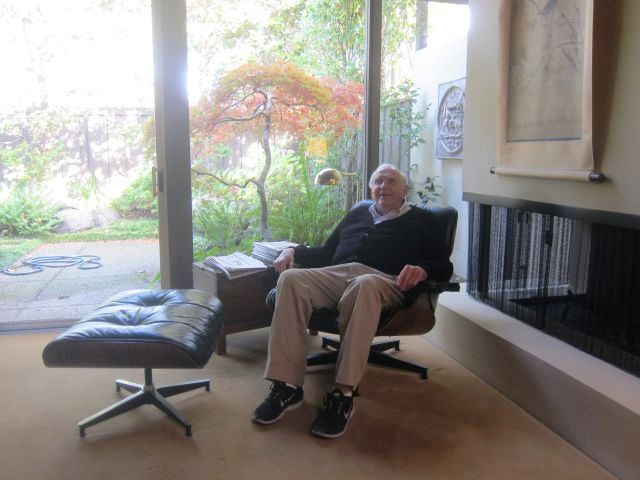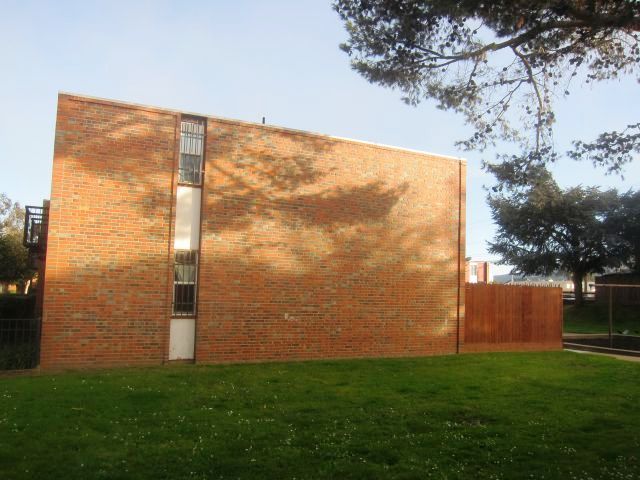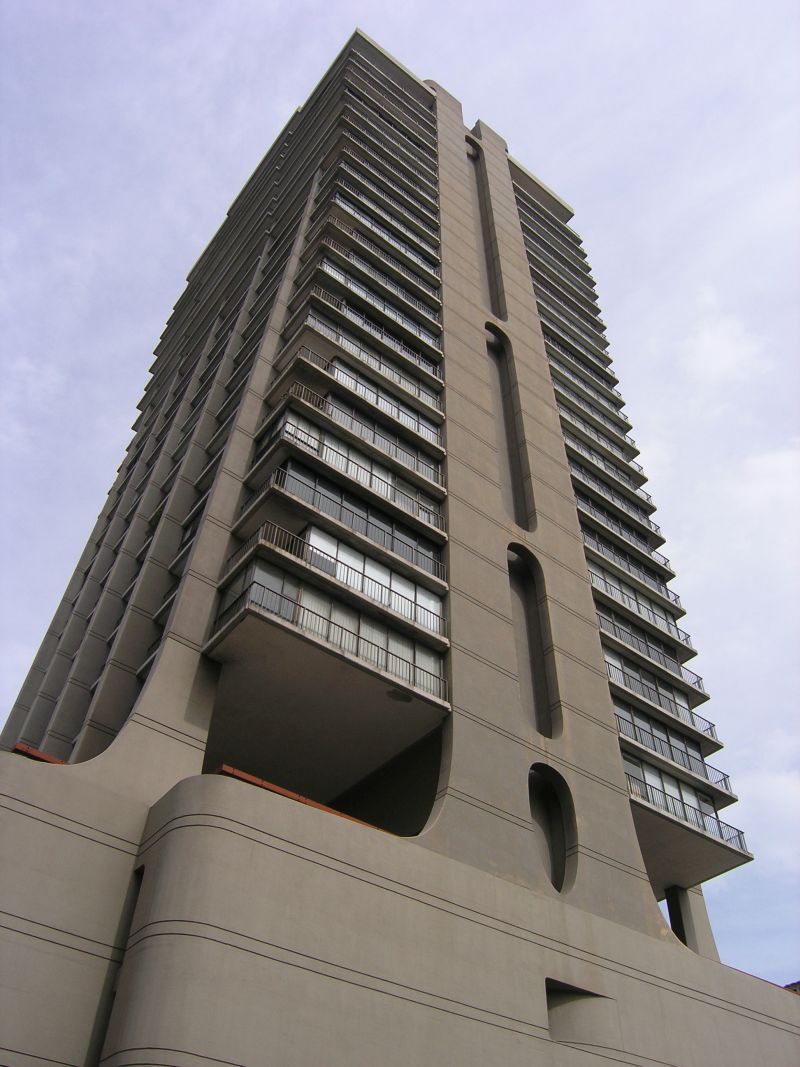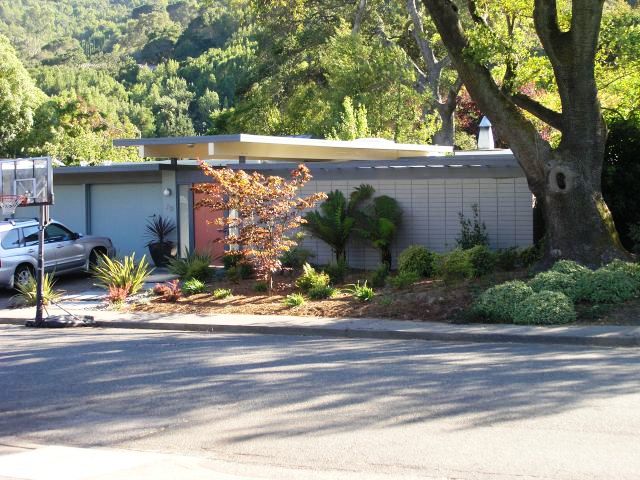
Was Eichler Undone by His Social Conscience?
 |
|
|
As the workday came to an end, Jim Dougherty would sometimes feel a kindly hand grasp his shoulder. It was his boss, Joe Eichler, and it was a signal.
“It would be around 4,” Dougherty recalls. “He would say, ‘How would you like to have dinner tonight?' They were fundraisings. You really had to go, and you were the driver.”
Dougherty, who worked for Eichler Homes from 1959 to early 1966, was a young man just starting out in business. Eichler, who was just hitting 60, didn’t like to drive long distances at night, certainly not from Palo Alto to San Francisco, where many of these events, often Democratic Party functions, took place.
“He was one of the big contributors to the California Democratic Party,” Dougherty adds. Dougherty would drive his boss to such events three or four times a year, where he attended alongside Joe. He got to meet Governor Pat Brown, state Controller and later U.S. Senator Alan Cranston, and others.
“It was interesting for me,” recalls Dougherty, who lives in Meadowcreek today, a community of Eichler townhouses in Palo Alto. “I’m a little bit political, and to get exposed to these people was really a treat for me.” This happened three or four times a year.
 |
|
|
Although Dougherty never became close friends with Joe Eichler, who always maintained a business-like air around the office, he did get to know him and to admire him – in part because of Joe’s social conscience.
And, like some other people who worked at Eichler Homes, he believes that social conscience may have helped lead to the firm’s downfall.
Eichler Homes teetered on bankruptcy, and eventually slipped into it in 1966. Eichler’s expansion into apartment building in San Francisco, some of it 'social housing' aimed at the affordable housing market, was blamed by many for the firm’s financial difficulties.
“He had a philosophy that he wanted to give back, and he thought doing low-income housing or FHA [Federal Housing Administration] housing, was the right thing to do,” Dougherty says.
“San Francisco was the downfall of Eichler Homes. Mr. Eichler wanted to do low-income housing as a personal thing. The highrise Geneva Towers were low-income housing, and the [adjacent] town houses ended up being low-income housing. It turned into a high crime area,” Dougherty says.
The pair of 20-story Geneva Towers, and the Geneva Terrace townhouses, were built in the San Francisco neighborhood of Visitacion Valley, near the city line and near the Cow Palace. The Geneva Towers, which grew blighted and plagued with crime, were declared blighted and blown up in 1998.
Eichler also built a highrise in the city’s troubled Tenderloin, as well as middle-class housing in the Laguna Heights area and the luxury Summit residential tower on Russian Hill.
 |
|
|
The projects in the city took an economic and managerial toll on Eichler’s better-performing suburban endeavors.
“When you’re building houses,” Dougherty says, “you sell houses. You get paid. But the highrises needed a lot of money to build and were carrying it for years. So he had to sell a lot of lots in San Jose, Burlingame, Southern California.” Those lots had been slated for more Eichler homes.
Frank LaHorgue, who also worked for Eichler Homes in sales at the time, agrees that social concerns played a role in Joe Eichler’s decision to focus so much of his efforts in the early 1960s on San Francisco. But he adds another explanation as well.
“I think that’s part of it,” LaHorgue says of social concerns. “I don’t deny that at all.”
But, he says, Eichler was impressed with a series in the Harvard Business Review “whose argument was that people were tired of moving out to suburbia. There was going to be a return to the city. People were tired of commuting out and out and out. Joseph Eichler thought there was a lot of logic to that.”
And there may have been personal considerations. “He loved San Francisco. He would go to Sam’s for lunch every day and meet his cronies,” Dougherty says of Eichler, referring to Joe’s favorite restaurant. “San Francisco was the one place he wanted to be. And he had his penthouse [in the Summit].”
LaHorgue, who worked in Eichler’s core, suburban operation, says what Joe was up to in the city “was largely a different operation. I certainly never felt any connection with it.” Eichler's San Francisco office had an entirely different staff.
A weak market for apartments, and the need to tie up money in urban projects, took Eichler’s attention away from the money-making suburban operation – and people in the company noticed it, Dougherty and LaHorgue say.
 |
|
|
In the early 1960s, LaHorgue says, everybody in the company was excited about the new subdivision of Lucas Valley in Marin, which benefited from a beautiful, hill-fringed valley setting and special land planning to preserve the hillsides.
“This was the flagship, and I think still is the flagship project of Eichler Homes,” says LaHorgue, who lives in the neighborhood today, “and all of sudden a lot of lots were sold off. Why would that happen after all the effort that had gone into it?”
One of LaHorgue’s jobs was to find suitable spots for new neighborhoods. He soon found, though, that when he’d steer Eichler to available home sites on the Peninsula, nothing would come of it.
LaHorgue left the company in 1965. Dougherty, who was working in Eichler Home’s Southern California subdivisions, was laid off in 1966 during the company's financial collapse.
LaHorgue never spoke to Joe Eichler after leaving his employ.
Dougherty did see Eichler again. Eichler had returned to homebuilding with a stripped down, post-Eichler Homes organization.
“I remember the last time I saw Mr. Eichler. It was Sunday morning, and I was driving up San Antonio Road in Los Altos,” Dougherty recalls. “There were four homes, and I stopped to see them. Mrs. Eichler was sitting in the car, and Mr. Eichler was in one of the model homes as the sole salesman.
“I had two thoughts: One, here was the most successful home builder in California, and he was now selling a few homes out of a garage and it was so sad; and, two, here was a successful man doing the thing that gave him joy and satisfaction.
“I don’t know which one was true.”
- ‹ previous
- 617 of 677
- next ›



